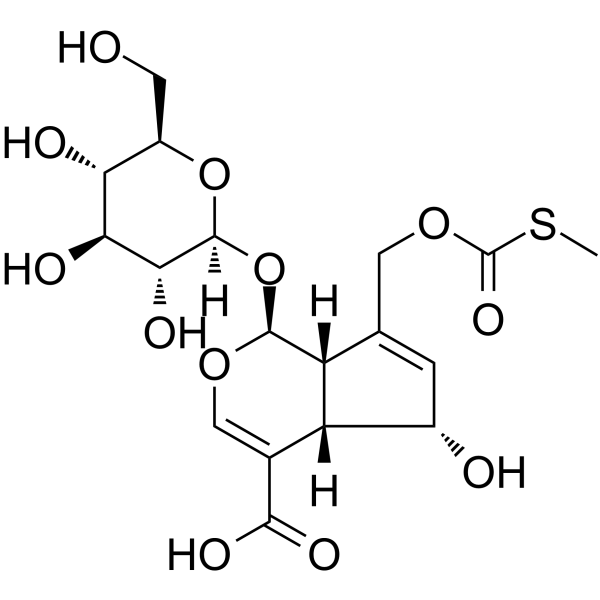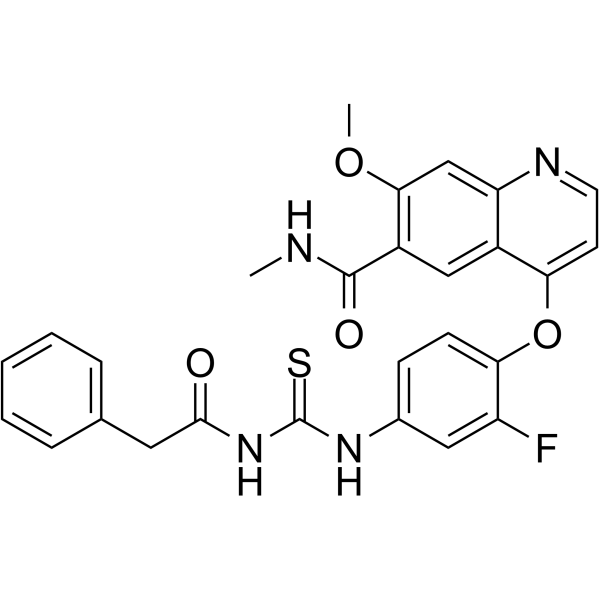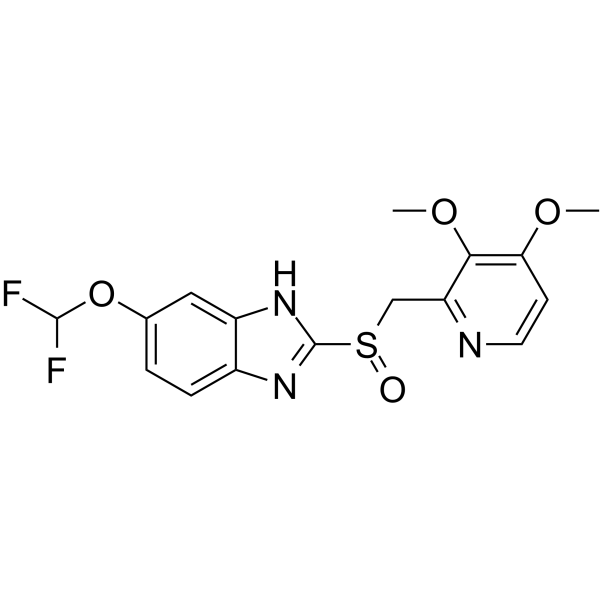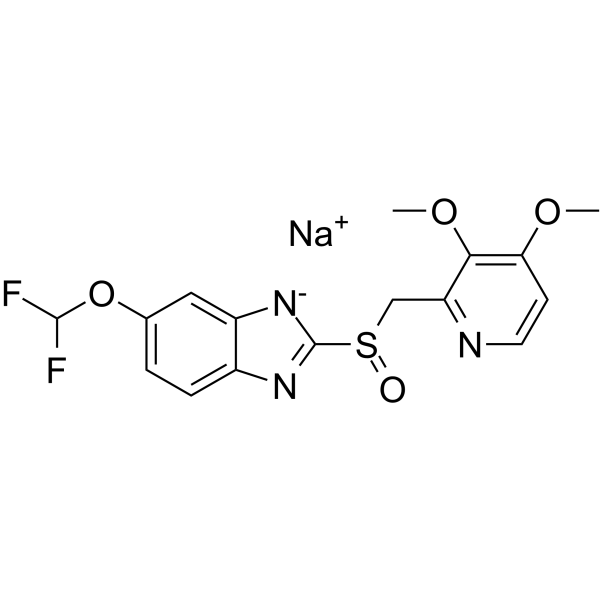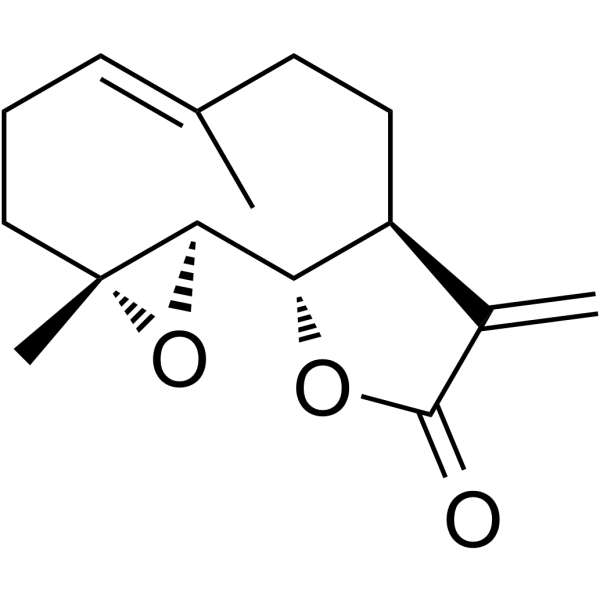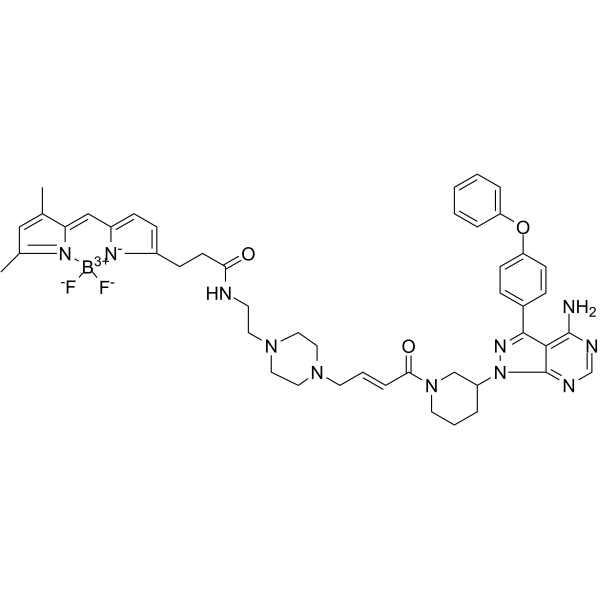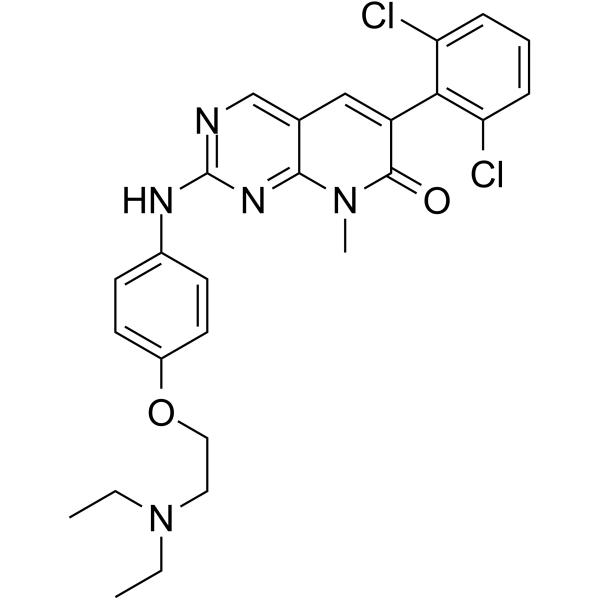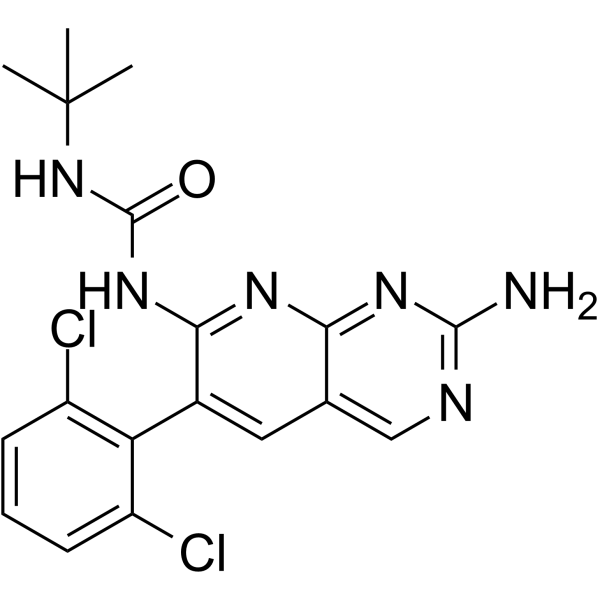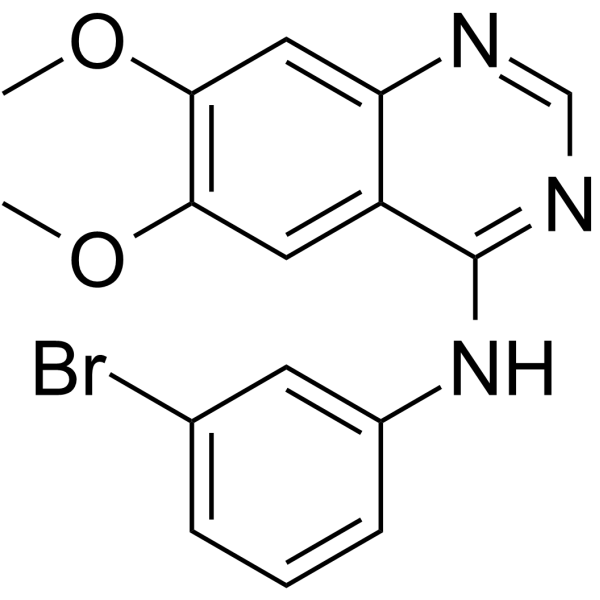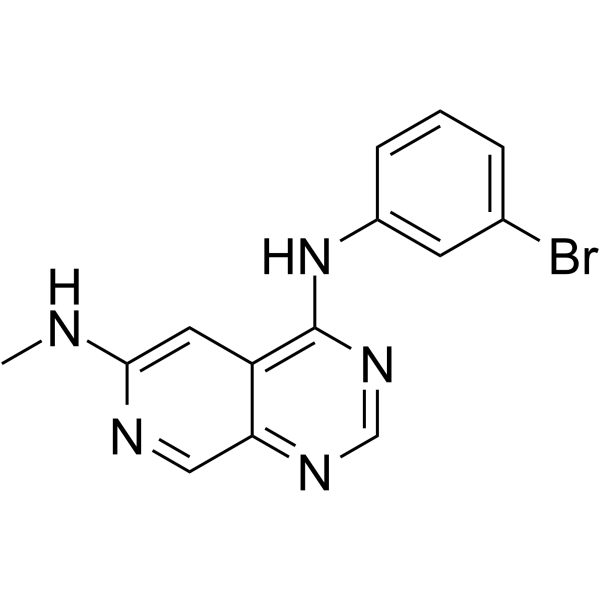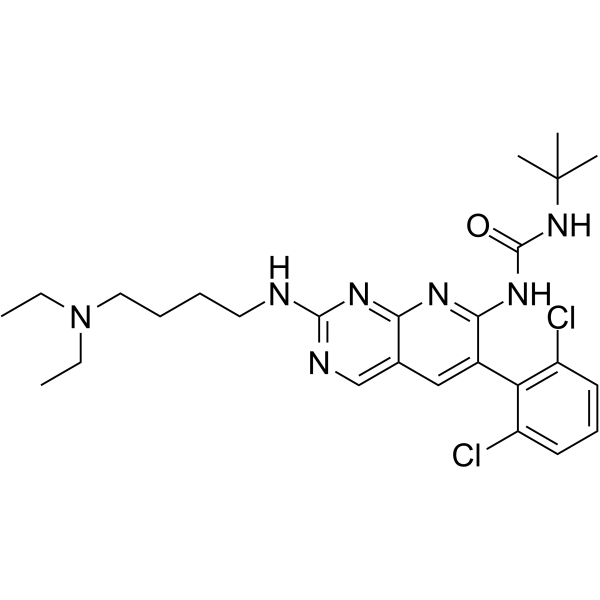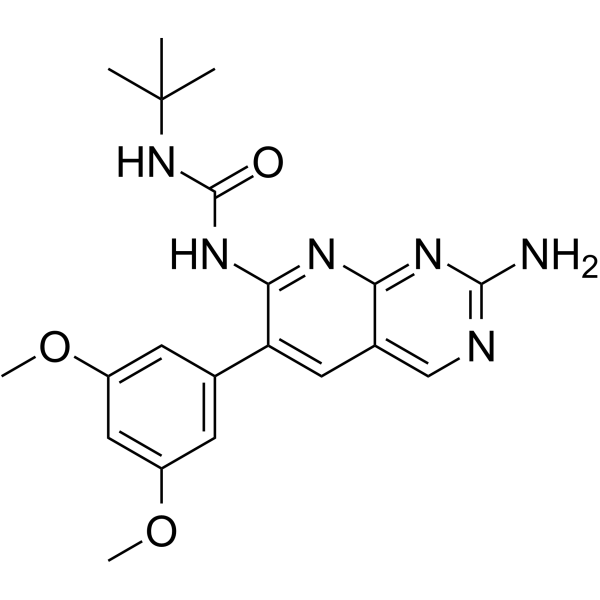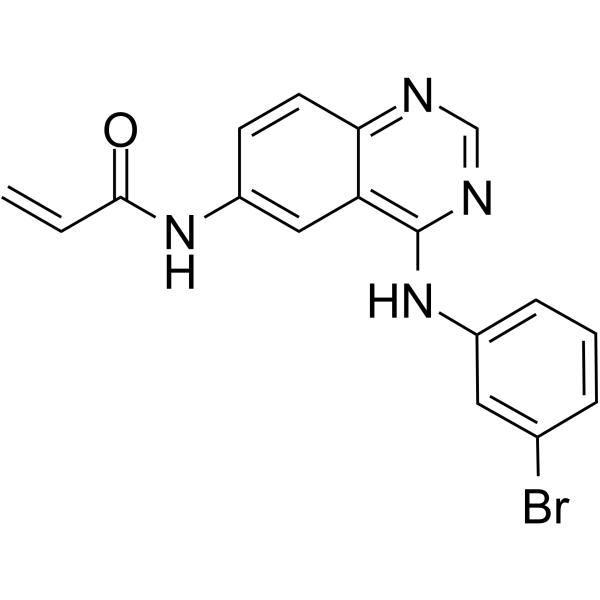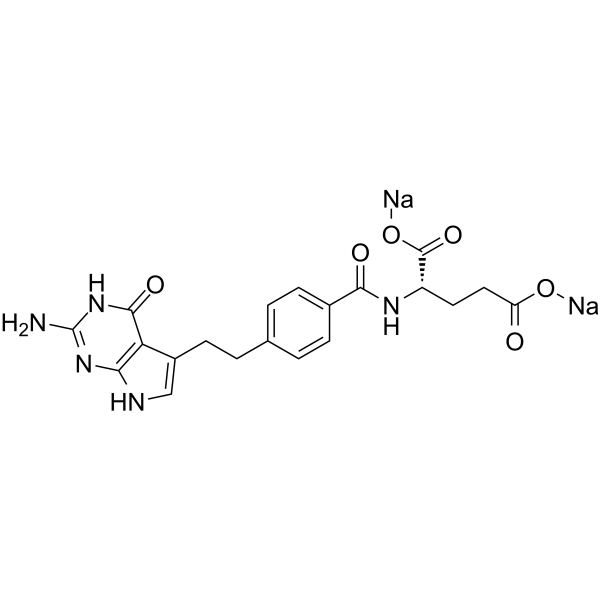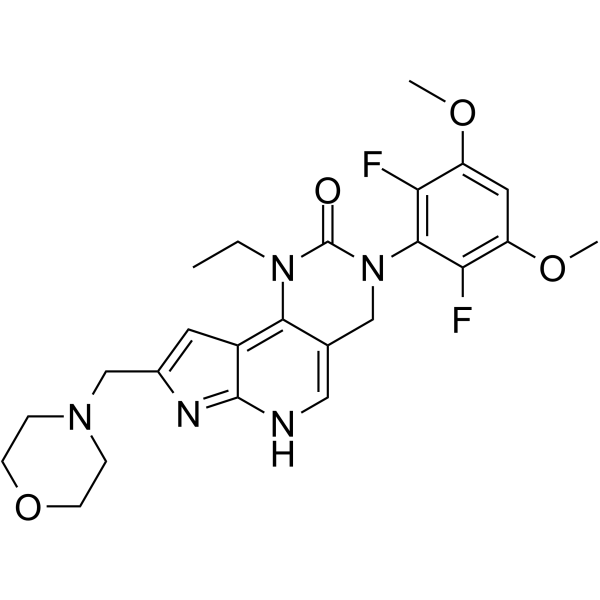|
BP10861
|
Paederosidic acid
|
|
|
|
|
Paederosidic acid has significant anti-tumor, anticonvulsant and sedative effects. Paederosidic acid increases brain gamma-aminobutyric acid and decreases glutamic acid in the brain, and it up-regulates expressions of GAD 65, may be a promising future therapeutic agent for treatment of epilepsy.
|
|
BP10215
|
Pamufetinib
|
|
|
|
|
TAS-115 is a potent inhibitor of VEGFR and hepatocyte growth factor receptor (c-Met/HGFR)-targeted kinase(IC50s of 30 and 32 nM for rVEGFR2 and rMET, respectively).
|
|
BP10042
|
Pantoprazole
|
|
|
|
|
Pantoprazole is a proton pump inhibitor used for short-term treatment of erosion and ulceration of the esophagus caused by gastroesophageal reflux disease.
|
|
BP10453
|
Pantoprazole sodium
|
|
|
|
|
Pantoprazole Sodium is the sodium salt form of a substituted benzimidazole with proton pump inhibitor activity. Pantoprazole is a lipophilic, weak base that crosses the parietal cell membrane and enters the acidic parietal cell canaliculus where it becomes protonated, producing the active metabolite sulfenamide, which forms an irreversible covalent bond with two sites of the H+/K+-ATPase enzyme located on the gastric parietal cell, thereby inhibiting both basal and stimulated gastric acid production.
|
|
BP10711
|
Pantoprazole Sodium Hydrate
|
|
|
|
|
Pantoprazole is a proton pump inhibitor drug, used for short-term treatment of erosion and ulceration of the esophagus caused by gastroesophageal reflux disease.
|
|
BP10948
|
Parthenolide
|
|
|
|
|
(-)-Parthenolide, an inhibitor of the Nuclear Factor-κB Pathway, also promotes the ubiquitination of MDM2 and activates p53 cellular functions.
|
|
BP10592
|
PATULIN
|
|
|
|
|
Patulin is a mycotoxin produced by a variety of molds commonly found in rotting apples, including Aspergillus and Penicillium.
|
|
BP10036
|
PCI-33380
|
|
|
|
|
PCI-33380 is an irreversible inhibitor of Bruton's Tyrosine Kinase.
|
|
BP10839
|
PD0166285
|
|
|
|
|
PD0166285 is a potent Wee1 and Chk1 inhibitor with activity at nanomolar concentrations.PD0166285 is a novel G2 checkpoint abrogator.
|
|
BP10785
|
PD-089828
|
|
|
|
|
PD 089828 is a competitive inhibitor of the receptor tyrosine kinases FGFR1, PDGFRβ, and EGFR (IC50s = 0.15, 1.76, and 5.47 μM, respectively) and a noncompetitive inhibitor of the nonreceptor tyrosine kinase c-Src (IC50 = 0.18 μM)
|
|
BP10627
|
PD153035
|
|
|
|
|
PD153035 hydrochloride is an effective and selective inhibitor of EGFR (Ki/IC50: 5.2/29 pM, in cell-free assays); little inhibitory against FGFR, PGDFR, InsR, CSF-1 and Src.
|
|
BP10830
|
PD153035 hydrochloride
|
|
|
|
|
PD153035 hydrochloride (ZM 252868; AG 1517) is a effective and selective inhibitor of EGFR (Ki: 5.2 pM, IC50: 29 pM); few influence against FGFR, PGDFR, InsR, CSF-1, and Src.
|
|
BP10751
|
PD158780
|
|
|
|
|
PD 158780 reversibly inhibits auto and transphosphorylation of all four members of the ErbB receptor superfamily: EGFR, ErbB2, ErbB3, and ErbB4 (IC50s: 8μM, 49 nM, 52 nM, and 52 nM in cell assay).
|
|
BP10880
|
PD-161570
|
|
|
|
|
PD-161570 is a potent and ATP-competitive human FGF-1 receptor inhibitor with an IC50 of 39.9 nM and a Ki of 42 nM. PD-161570 also inhibits the PDGFR, EGFR and c-Src tyrosine kinases with IC50 values of 310 nM, 240 nM, and 44 nM, respectively.
|
|
BP10879
|
PD-166866
|
|
|
|
|
PD166866 is a selective FGFR tyrosine kinase inhibitor.
|
|
BP10891
|
PD168393
|
|
|
|
|
PD168393 is an irreversible EGFR inhibitor (IC50: 0.70 nM), irreversibly alkylate Cys-773; inactive against PKC, FGFR, PDGFR, and insulin.
|
|
BP10441
|
Pembrolizumab
|
|
|
|
|
Pembrolizumab is a humanized monoclonal antibody and the first in the class of agents called the HER2 dimerization inhibitors impairs the ability of HER2 to bind to other members of the HER family.
|
|
BP10598
|
Pemetrexed disodium
|
|
|
|
|
Pemetrexed is a parenterally administered folate antagonist and antineoplastic agent, used in the treatment of non-small cell lung cancer and malignant mesothelioma. Pemetrexed therapy has been associated with moderate rates of serum enzyme elevations during therapy, but has not been convincingly linked to instances of acute, clinically apparent liver injury.
|
|
BP10606
|
Pemigatinib
|
|
|
|
|
Pemigatinib is an orally active, selective inhibitor of FGFR(IC50s of 0.4 nM, 0.5 nM, 1.2 nM, 30 nM for FGFR1, FGFR2, FGFR3, FGFR4, respectively).
|
|
BP10657
|
Perifosine
|
|
|
|
|
Perifosine is an oral-active, alkyl-phosphocholine Akt inhibitor with potential antineoplastic activity.
|
